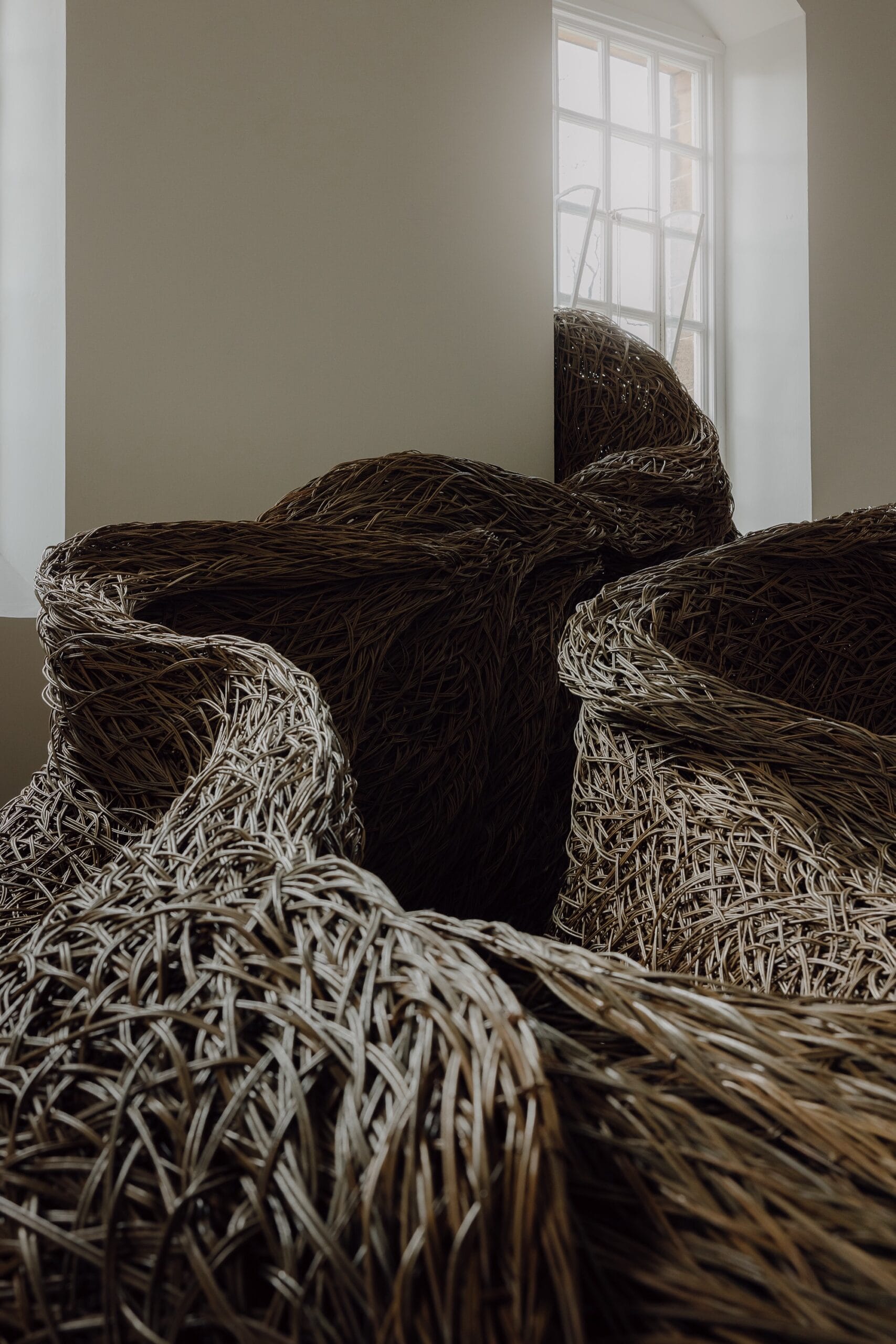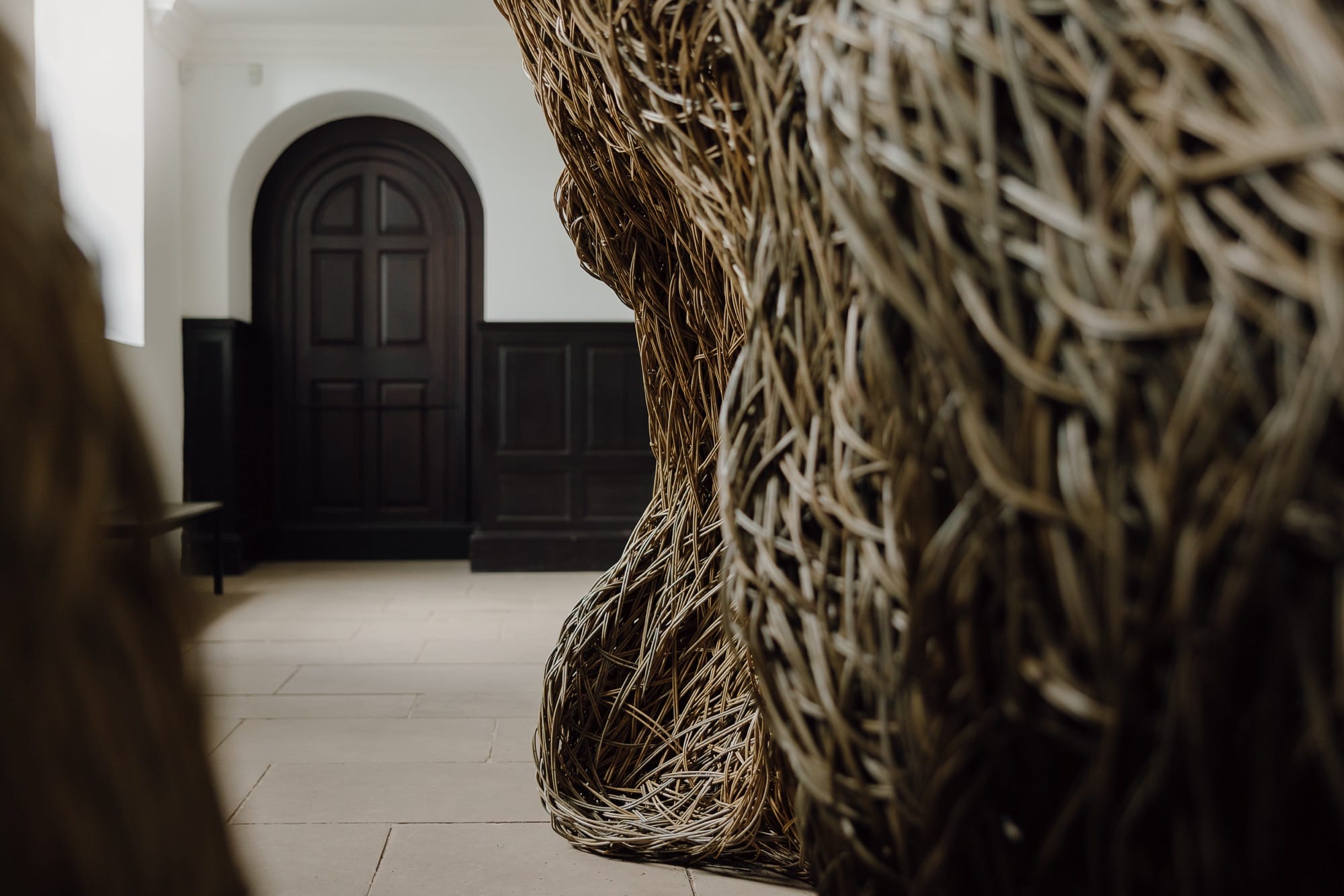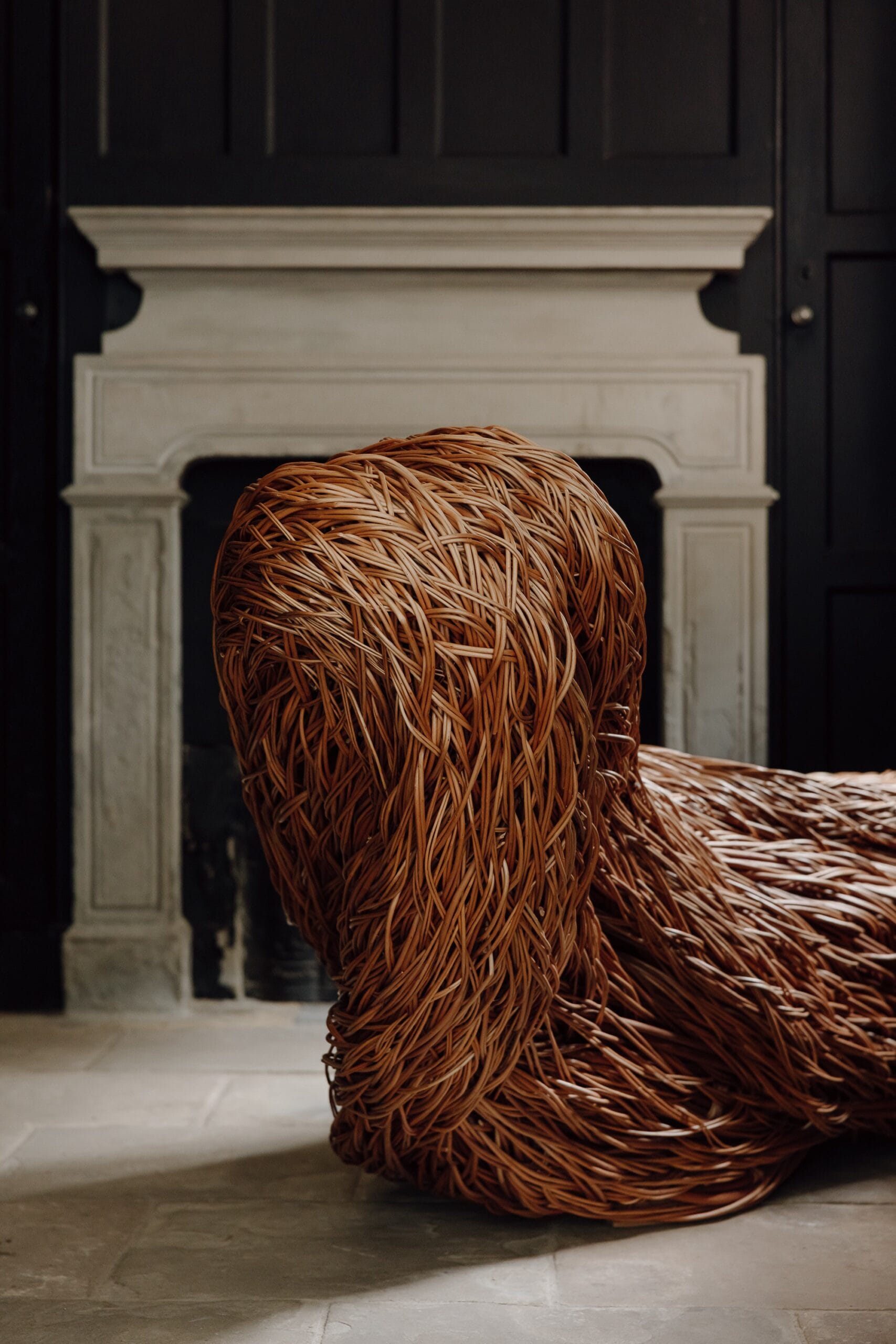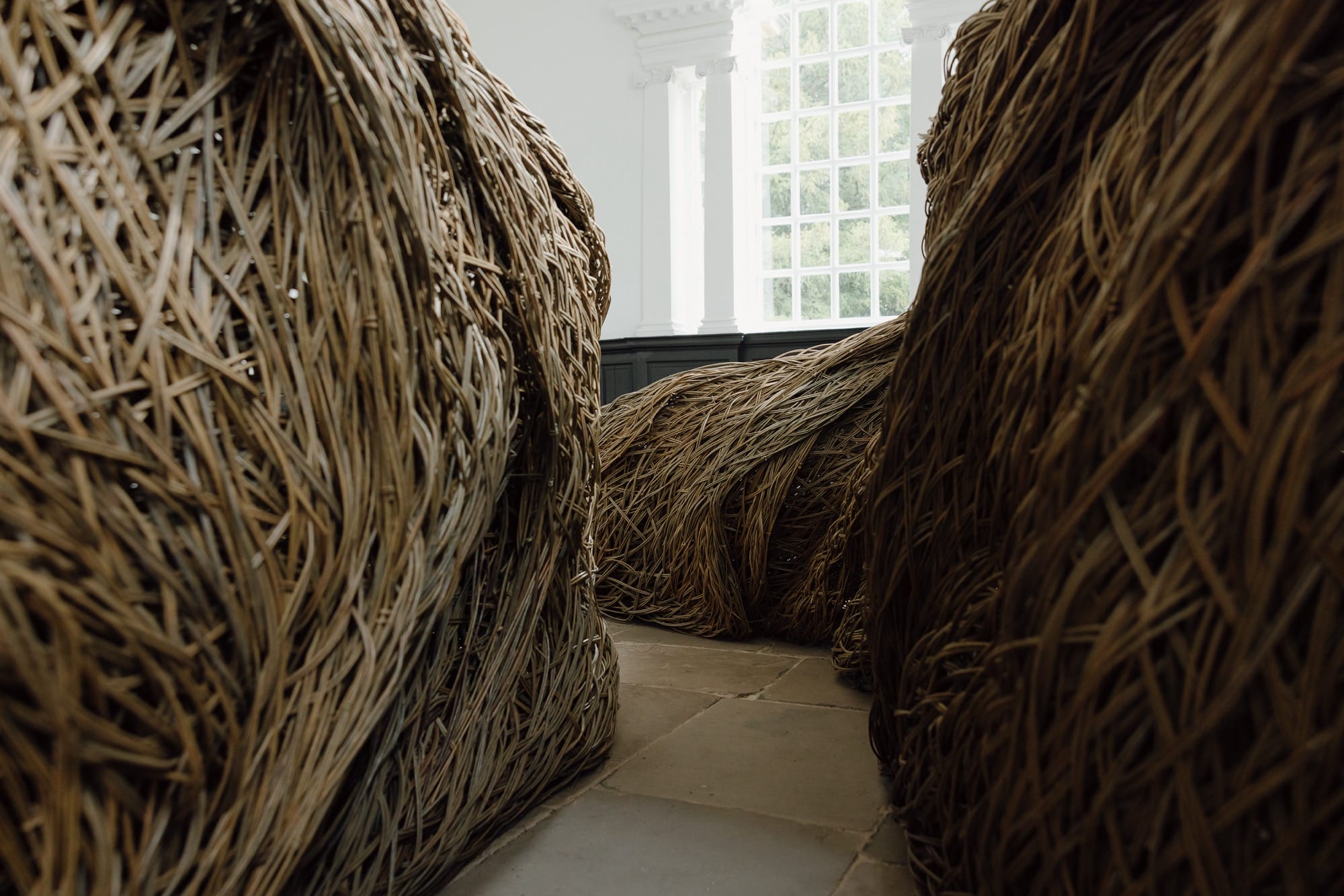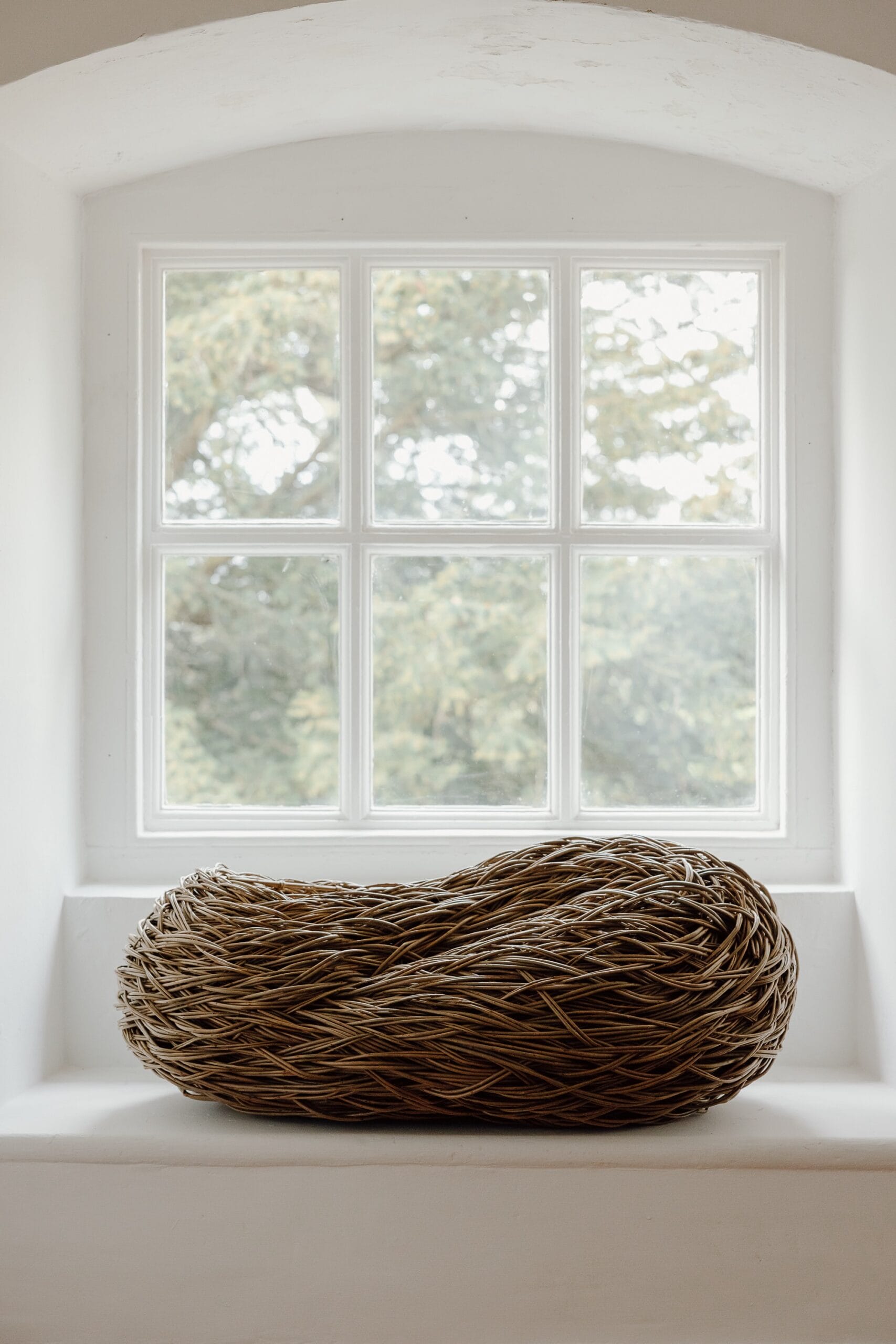Working with supple strands of Somerset willow—harvested with care and an eye toward sustainability — Laura Ellen Bacon breathes life into flowing, organic sculptures that seem to pulse with quiet movement. Her creations twist and turn, whether they’re unfurling across a wall, spilling from a window, or resting like a coiled creature on a plinth. Each piece feels like it’s mid-transformation, inviting viewers to follow its path as if stepping into a living, breathing installation.

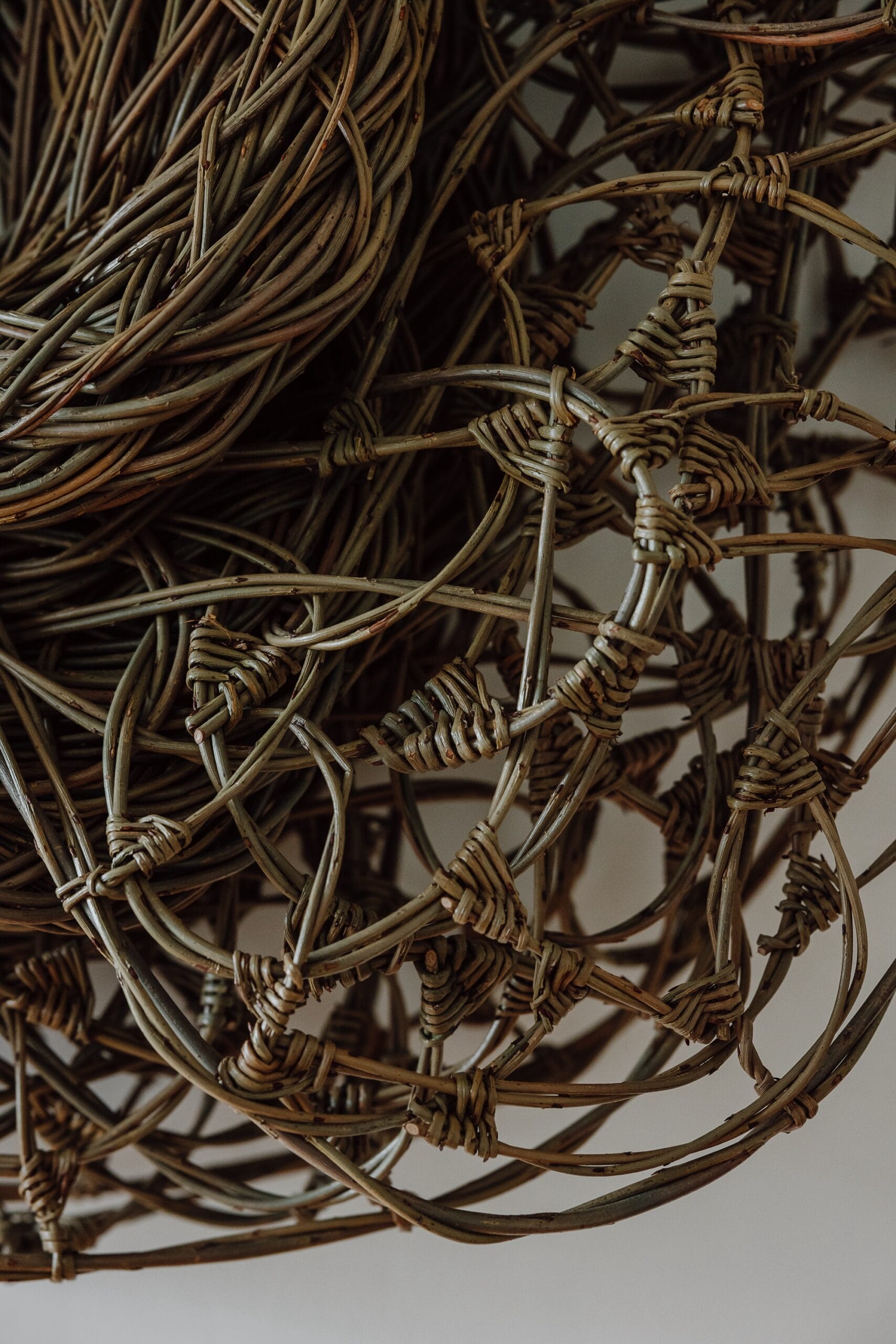
Bacon’s latest solo show, Into Being, has just opened at the Yorkshire Sculpture Park, and it’s nothing short of mesmerizing. Set within the park’s atmospheric 18th-century chapel, the centerpiece of the exhibition stretches a full six meters into the nave and towers three meters high. The sculpture swells and folds like something born from nature itself—think seed pods, burrows, or cocoons. There’s something comforting, even womb-like, in the way it draws you in—a quiet invitation to step inside and be held by the curves.
Her work joins a rich tradition of artists who echo the rhythms of the natural world—names like Andy Goldsworthy (whose work is permanently nestled throughout the park), Nicola Turner, and Kate MccGwire. Like them, Bacon uses natural materials not just for aesthetic effect but as a way of grounding her pieces in the space they inhabit. In fact, Into Being was crafted entirely on site, a labor of love that unfolded over eight weeks. She essentially “draws” in space, but instead of charcoal or paint, she uses willow—specifically about 80 bundles of Dicky Meadow, a variety prized for its straight, slender stems.
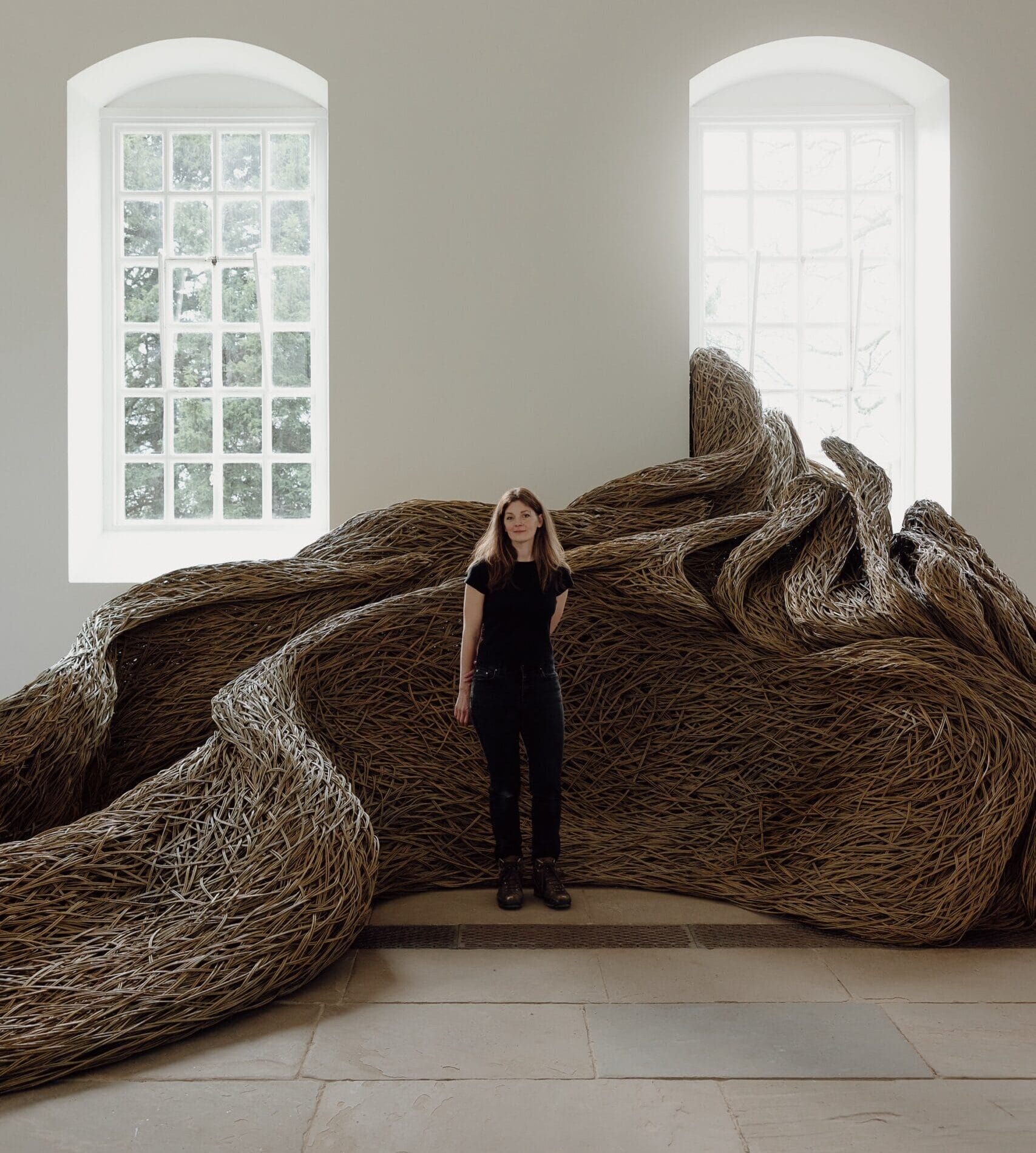
Willow weaving isn’t new in Britain; it’s an ancient craft, stretching back some 10,000 years, mostly associated with basketry. The material’s flexibility and featherlight quality make it a joy to work with—at least, in the right hands. Over the past two decades, Bacon has pushed those traditional techniques into new territory, playing with tension and slack, structure and fluidity, curves and corners. Her forms might look spontaneous, but they’re the result of years of exploration and intuitive craftsmanship.
In Into Being, she’s even incorporated fallen beech branches from around the park, subtly anchoring the work in its own environment. These raw elements act as a kind of skeletal frame for the piece—bringing to mind something ancient, perhaps even instinctual. “Through its material and form,” a statement notes, “the work conjures up a primal instinct to nest and reconnect with the natural world.” And in a beautiful full-circle gesture, once the installation comes down later this year, the willow won’t go to waste. Instead, it will be given new life as part of wildlife habitats across the park grounds.
Into Being runs through September 7 in West Bretton, England. For more of Bacon’s work, take a wander through her website or check out her Instagram—it’s like stepping into a forest made of lines and dreams.
